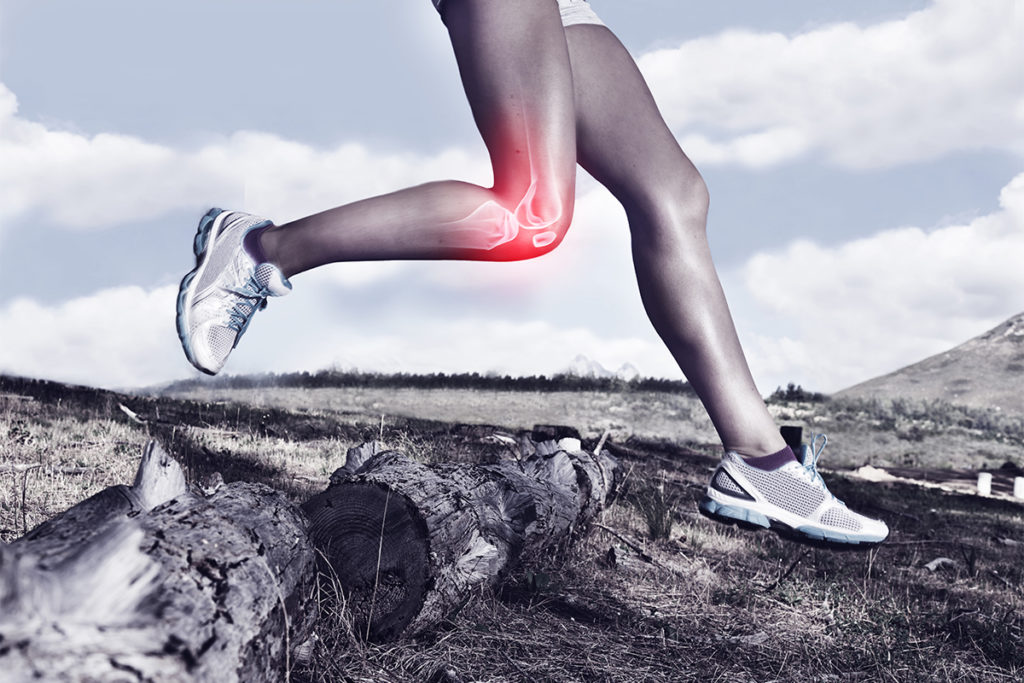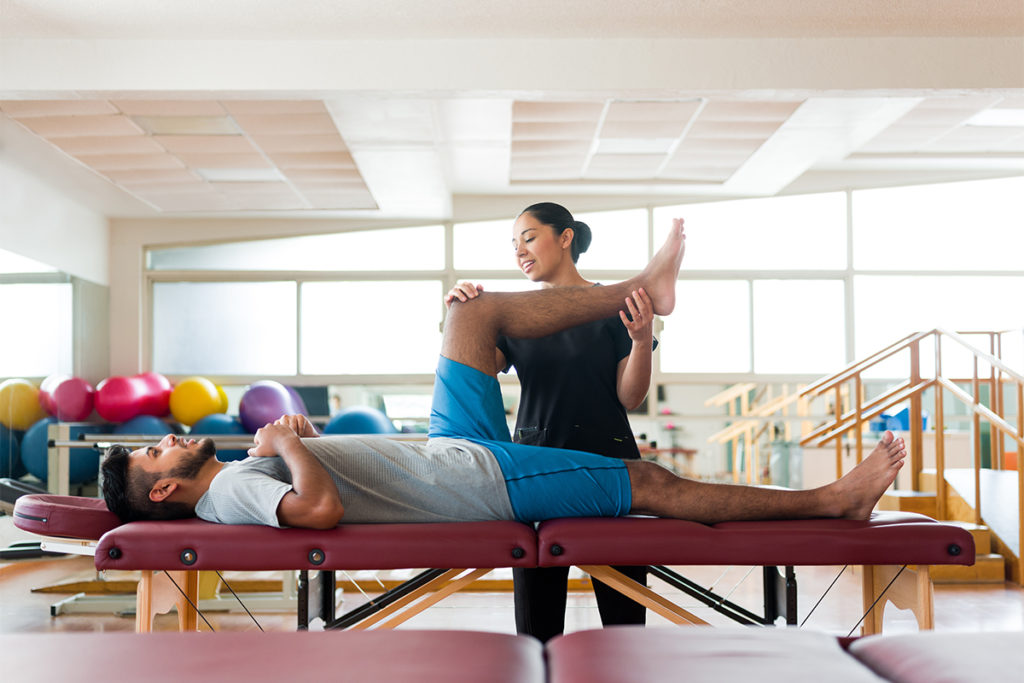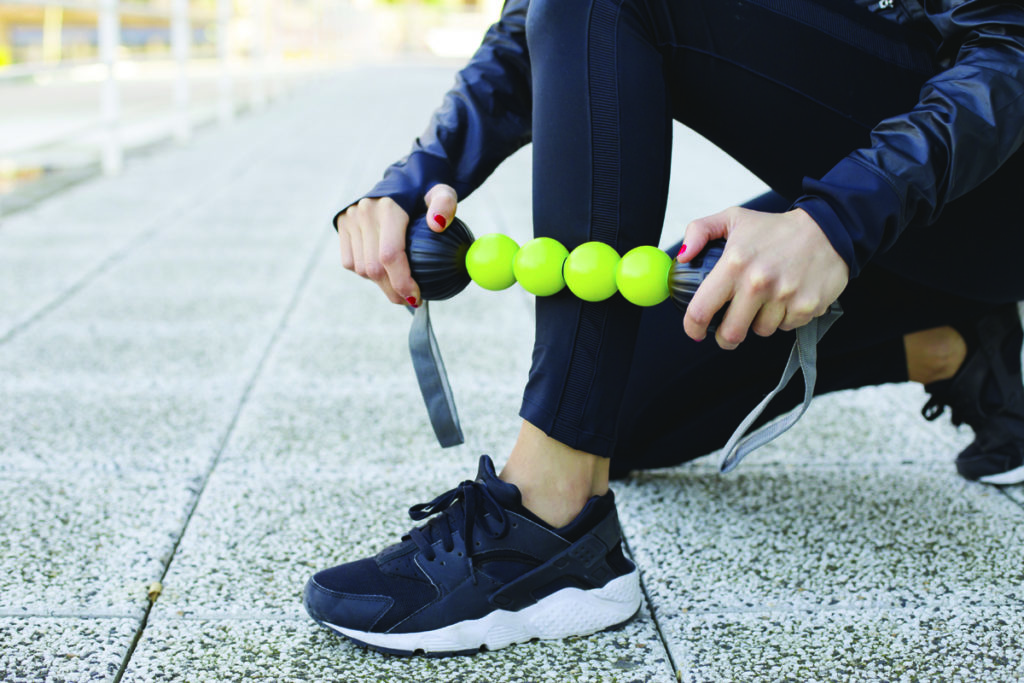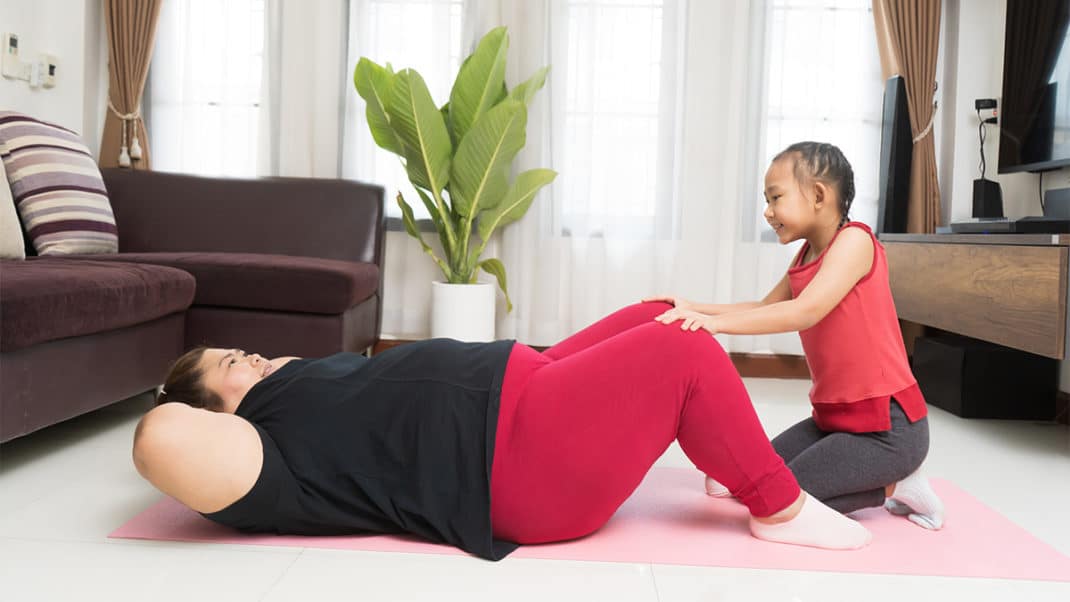Navigating the Challenges of Aging
How to Address Common Mobility Issues and Maintain Functional Independence

Aging is an inevitable part of life, but its effects on the body need not mean a loss of independence or quality of life. As a certified personal trainer or exercise professional, your role in helping clients navigate the physical challenges of aging is critical. Mobility, strength and functional independence often decline with age due to physiological changes, sedentary behavior and chronic conditions. However, with the right strategies and interventions, you can guide your clients towards maintaining and even improving their physical abilities.
This article aims to provide a comprehensive overview of common mobility issues in aging, explore effective assessment techniques and discuss evidence-based interventions, including exercise modalities, assistive devices, home modifications and nutritional considerations, empowering health and exercise professionals to navigate these challenges effectively.
Understanding Mobility Issues in Aging
Mobility issues are a significant concern for aging individuals, impacting their ability to perform daily activities and maintain an independent lifestyle (Caregiver Guide: Mobility Problems | HealthInAging.Org, 2025). As the global population ages, with projections indicating that one in six people will be aged 60 or over by 2030, addressing these mobility challenges becomes increasingly crucial (Mental Health of Older Adults – World Health Organization (WHO), 2023). Mobility limitations can lead to a cascade of negative outcomes, including falls, injuries, hospitalizations, reduced quality of life and increased mortality (WHO, 2023). For certified health and exercise professionals, understanding the multifaceted nature of mobility issues and implementing evidence-based strategies is essential to support older adults in preserving their functional independence and overall well-being.
Mobility, defined as a person’s ability to move around freely and safely, is a critical component of active aging (BMC Geriatrics, 2023). It enables older adults to maintain their independence, participate in physical activities, engage in social and community life and access necessary resources. However, the aging process often brings about physiological changes that can compromise mobility. These changes include a natural loss of muscle mass and bone density, decreased flexibility and reduced coordination (HealthInAging.Org, 2025). Common conditions such as arthritis, heart issues, reduced hearing and eyesight, osteoporosis, and balance and coordination problems can further contribute to mobility limitations. Neurological difficulties and diseases like Parkinson’s and dementia can also significantly affect movement and balance. The interplay of these factors can result in unsteadiness while walking, difficulty getting in and out of chairs and an increased risk of falls.
Falls are a major concern, leading to broken bones, bruises, fear of falling, and even death. An injury from a fall can further limit mobility, potentially leading to bed rest, which can worsen existing medical conditions and lead to new health problems such as circulatory issues, muscle weakness, pressure ulcers or pneumonia. Further, the psychological impact of mobility loss should not be overlooked, as it can lead to fear of falling, inactivity, social isolation and depression. Reduced mobility can also make simple daily activities like bathing and using the bathroom more difficult, potentially leading to infections (David De Vries, 2023). Therefore, addressing mobility issues in aging requires a holistic approach that considers both physical and psychological well-being.
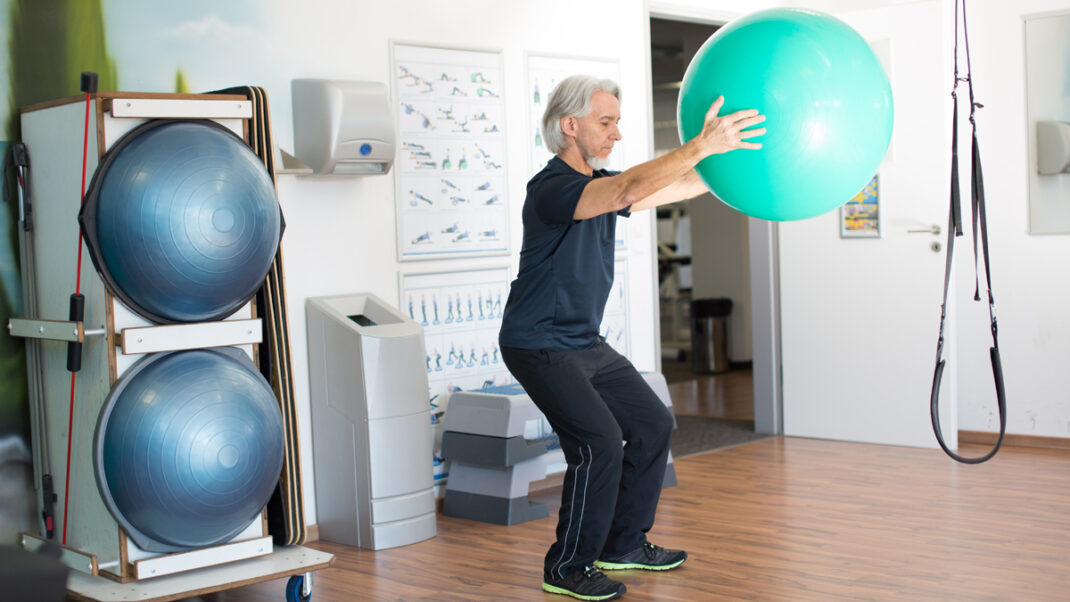
Assessing Mobility and Functional Independence
Accurate assessment is the foundation for developing effective interventions to address mobility issues. A comprehensive assessment should evaluate various aspects of physical function, including gait, balance, strength, flexibility and range of motion (HealthInAging.Org, 2025). Several tools and methods are available for assessing mobility and functional independence in older adults (2023).
Below are common assessment tools:
- TUG: The Timed Up and Go (TUG) test measures the time it takes for an individual to stand up from a chair, walk three meters, turn around, walk back and sit down. This test assesses mobility, balance and functional independence, providing valuable insights into an individual’s overall physical function.
- Gait Speed: Gait speed, measured by the time it takes to walk a specified distance, is another simple yet powerful indicator of mobility and overall health. Slower gait speed has been associated with an increased risk of falls, hospitalization and mortality (BMC Geriatrics, 2023).
- SPPB: The Short Physical Performance Battery (SPPB) is a composite measure that assesses lower extremity function through a series of tests, including standing balance, gait speed and chair stand tests. The SPPB provides a comprehensive evaluation of physical performance and is a strong predictor of functional decline.
In addition to these performance-based measures, self-reported questionnaires can provide valuable information about an individual’s perceived mobility and functional limitations. The Activity Measure for Post-Acute Care (AM-PAC) assesses functional activity limitations (2023). These measures, combined with a thorough medical history and physical examination, can help healthcare professionals identify specific mobility deficits and develop tailored intervention plans. It’s also important to consider environmental factors that may affect mobility, such as home safety hazards and access to transportation (HealthInAging.Org, 2025). Additionally, it’s crucial to assess the individual’s goals and preferences to ensure that interventions are meaningful and sustainable (HealthInAging.Org, 2025). Health and exercise professionals can work with physical therapists or other qualified professionals to assist in assessing functional independence.
Evidence-Based Exercise Interventions
Exercise is a cornerstone of interventions aimed at improving mobility and functional independence in older adults. A well-designed exercise program can strengthen muscles, improve balance and coordination, increase flexibility and enhance cardiovascular fitness. The key is to tailor the exercise program to the individual’s specific needs and abilities, considering their current fitness level, medical conditions and personal goals (HealthInAging.Org, 2025).
Different exercise modalities offer unique benefits for improving mobility. For example, we know that strength training combats age-related muscle loss and improves strength, which is essential for performing daily activities such as walking, climbing stairs and lifting objects. Studies have shown that strength training can increase lean body mass, improve physical performance and positively affect self-reported activities of daily living (2018). Certified health and exercise professionals can design safe and effective strength training programs that target major muscle groups, using appropriate loads and repetitions to stimulate muscle growth and strength gains (HealthInAging.Org, 2025).
Balance exercises are also crucial for improving stability and reducing the risk of falls. These exercises challenge an individual’s ability to maintain their center of gravity, enhancing coordination and reflexes. Incorporating balance exercises such as standing on one foot, heel-to-toe walking and using balance boards in exercise programming for older adults is paramount to preventing falls and loss of functional independence.
Research has also further demonstrated that participation in aerobic exercise, such as walking, swimming or cycling, improves cardiovascular fitness and endurance (2008). It can also reduce the inactivity-induced loss of strength, mobility, balance and endurance that are vital for performing daily activities. Aerobic will also help maintain a healthy weight, improve blood pressure and boost overall energy levels.
Finally, practicing flexibility exercises will help maintain joint range of motion and reduce stiffness as well as improve posture, reduce discomfort during daily activities and reduce the risk of injuries. A well-rounded exercise program should incorporate all these modalities to address the diverse needs of aging individuals with mobility issues. These exercises can be modified to suit different ability levels and can be easily incorporated into daily routines.

Assistive Devices and Home Modifications
In addition to exercise, assistive devices and home modifications play a crucial role in maintaining functional independence for older adults with mobility issues (HealthInAging.Org, 2025). Assistive devices like canes and walkers can provide extra support and stability while walking, reducing the risk of falls. A physical therapist can help determine the most appropriate type of cane or walker and ensure it is adjusted to the right height. Further, wheelchairs and mobility scooters can provide mobility for individuals who have difficulty walking long distances or standing for extended periods. These devices allow older adults to participate in social activities, run errands and maintain their independence.
For individuals with more advanced mobility problems, a home assessment might be valuable to examine the need for making changes to the physical environment to improve accessibility and safety. These modifications can range from simple changes like clearing clutter and securing carpets to more complex renovations such as installing ramps, widening doorways and modifying bathrooms (David De Vries, 2023). Removing trip hazards, improving lighting and adding handrails can significantly reduce the risk of falls. A home safety check can identify potential hazards and recommend appropriate modifications. Home modifications not only improve safety but also enhance the overall quality of life for older adults, allowing them to remain in their homes and communities for longer. Studies have shown that external housing modifications can reduce the probability of falls and pain and improve self-rated health among older adults with mobility impairments (Chandola & Rouxel, 2022). In addition, these modifications can promote social participation and enable older adults to maintain their independence.
The Role of Nutrition
Nutrition plays a vital, yet often underestimated role in maintaining mobility and functional independence in older adults. Adequate nutrition provides the energy and nutrients needed for muscle strength, bone health and overall physical function. Malnutrition, which is common in older adults, can lead to muscle loss, weakness, impaired balance and an increased risk of falls (2004). Ensuring sufficient protein intake is crucial for maintaining muscle mass and strength, especially as protein needs may increase with age (NHS, 2024). Protein supplementation, under the direction of a registered dietitian or primary care provider, can be beneficial, but it’s important to consider potential risks such as decreased voluntary food ingestion and accelerated decline in renal function.
Micronutrients, such as vitamins C, D, and E, and carotenoids, also play a critical role in mobility. Vitamin D is essential for muscle function and bone health and supplementation has been shown to reduce the risk of falls (2004). Antioxidants, found in fruits and vegetables, help counterbalance the age-dependent increase in oxidative stress, which can damage muscle tissue. Selenium also exerts antioxidative functions and has been associated with muscle strength. Encouraging clients to consume a diet rich in fruits and vegetables, such as the Mediterranean diet, can provide a wide range of essential nutrients and promote healthy aging. Certified health and exercise professionals can play a crucial role in educating older adults about the importance of nutrition and providing guidance on making healthy food choices while working in partnership with an RDN to provide nutrient analysis, meal planning and medical nutrition therapy if warranted.

Addressing Psychological and Social Factors
Maintaining mobility and functional independence is not solely dependent on physical factors; psychological and social well-being also play a significant role. Mobility loss can lead to feelings of frustration, anger, grief, isolation and disengagement, potentially resulting in emotional challenges such as depression and anxiety (WHO, 2023). Social isolation, a major risk factor for those suffering from disabilities, is associated with a higher risk of dementia, cardiac problems and stroke. Certified health and exercise professionals should be aware of these potential psychological impacts and create a supportive and encouraging environment for older adults. Encouraging social interaction and participation in meaningful activities can help combat feelings of loneliness and isolation. Creating opportunities for socializing, such as group exercise classes or community activities, can keep older adults mobile and engaged. Addressing the fear of falling is also crucial, as it can lead to inactivity and further decline in mobility. Helping older adults practice doing the things they are afraid of, setting small goals and providing praise and encouragement can build confidence and promote physical activity (HealthInAging.Org, 2025). Cognitive function also plays a role in mobility and functional independence. Exercise, particularly activities that challenge executive control, may have benefits for the brain centers that support executive function, which in turn can facilitate consistency in physical activity. Professionals should consider integrating cognitive exercises into mobility programs to enhance overall well-being (Langhammer, Bergland, & Rydwik, 2018).
The Role of Certified Health and Exercise Professionals
Certified health and exercise professionals are uniquely positioned to address the challenges of aging and promote mobility and functional independence in older adults. Their expertise in exercise prescription, movement assessment and behavior change strategies enables them to design and implement effective interventions that meet the specific needs of this population (Langhammer, Bergland, & Rydwik, 2018). They can conduct thorough assessments to identify mobility deficits, assess fall risk and evaluate overall physical function as well as develop individualized exercise programs that incorporate strength training, balance exercises, aerobic exercise and flexibility exercises to improve mobility and reduce the risk of falls. Certified professionals can provide guidance on proper exercise technique, progression and safety precautions, ensuring that older adults can exercise effectively and safely and educate older adults about the importance of nutrition and provide practical tips for making healthy food choices to support muscle strength and bone health.
Moreover, certified professionals can play a crucial role in motivating and empowering older adults to adopt and maintain an active lifestyle. By building a strong rapport, setting realistic goals and providing ongoing support, they can help older adults overcome barriers to exercise and achieve long-term success. In addition to working directly with older adults, certified health and exercise professionals can collaborate with other healthcare providers, such as physicians, physical therapists and occupational therapists, to provide a comprehensive plan of care.
Finally, these professionals can also advocate for policies and programs that support active aging and promote mobility in their communities. By embracing a holistic approach and leveraging their expertise, certified health and exercise professionals can make a significant difference in the lives of aging individuals, helping them navigate the challenges of aging and maintain their functional independence.
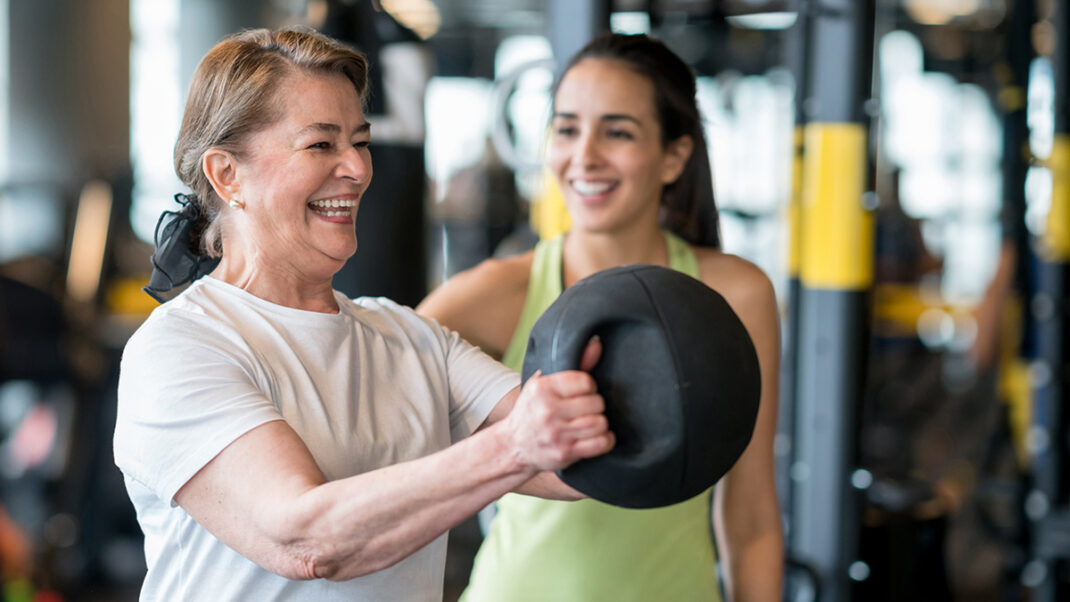
Practical Application
Navigating the challenges of aging and maintaining functional independence requires a comprehensive and multifaceted approach (David De Vries, 2023). Mobility issues, a common concern among older adults, can have a significant impact on their quality of life and overall well-being. Certified health and exercise professionals play a crucial role in addressing these challenges by implementing evidence-based interventions that promote mobility and prevent falls. This includes conducting thorough assessments, developing individualized exercise programs, recommending appropriate assistive devices and home modifications, providing guidance on nutrition and addressing psychological and social factors. By understanding the multifaceted nature of mobility issues and embracing a holistic approach, certified health and exercise professionals can empower older adults to navigate the challenges of aging and maintain their functional independence, enabling them to live fulfilling and active lives. As the population ages, the role of certified health and exercise professionals in promoting mobility and functional independence will become increasingly important, making their expertise invaluable in supporting healthy aging.
References
7 Common Assistive Devices for Senior Adult Care. (2024). Retrieved from https://omcoh.org/2024/08/06/assistive-devices-for-senior-adult-care/
American Geriatrics Society. (2025). Caregiver guide: Mobility problems. Retrieved from https://www.healthinaging.org/tools-and-tips/caregiver-guide-mobility-problems
Brahms, C. M., Hortobágyi, T., Kressig, R. W., & Granacher, U. (2021). The interaction between mobility status and exercise specificity in older adults. Exercise and Sport Sciences Reviews, 49(1), 15–22. https://doi.org/10.1249/JES.0000000000000237
Chandola, T., & Rouxel, P. (2022). Home modifications and disability outcomes: A longitudinal study of older adults living in England. The Lancet Regional Health – Europe, 18, 100397. https://doi.org/10.1016/j.lanepe.2022.100397
Chandola, T. & Rouxel, P. (2022). Home modifications and disability outcomes: A longitudinal study. PMC. Retrieved
ChenMed. (2025, January 14). How nutrition programs help seniors stay independent. ChenMed. https://www.chenmed.com/blog/how-nutrition-programs-help-seniors-stay-independent
Freiberger, E., Sieber, C. C., & Kob, R. (2020). Mobility in older community-dwelling persons: A narrative review. Frontiers in Physiology, 11, 881. https://doi.org/10.3389/fphys.2020.00881
Harvard Health Publishing. (2021, May 29). Mind, mood and mobility. Harvard Health. https://www.health.harvard.edu/healthbeat/mind-mood-and-mobility
Langhammer, B., Bergland, A., & Rydwik, E. (2018). The importance of physical activity exercise among older people. BioMed Research International, 2018, 7856823. https://doi.org/10.1155/2018/7856823
Maresova, P., Krejcar, O., Maskuriy, R., et al. (2023). Challenges and opportunity in mobility among older adults – key determinant identification. BMC Geriatrics, 23, 447. https://doi.org/10.1186/s12877-023-04106-7
